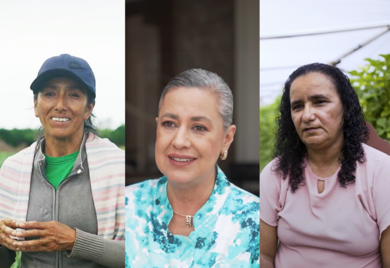The Caribbean Private Sector: How to expand lending

As I thought how best to answer Gerry Johnson’s recent blog about expanding lending to the private sector, I knew my response would need to recognize and celebrate this uniqueness rather than try a one-size-fits-all approach.
Since 2003, the IDB has done 121 non-sovereign guaranteed operations in the Caribbean valued at US$310 million. This includes 27 loans, 16 trade finance guarantees and one equity investment while the majority is composed of smaller technical assistance projects.
One hundred and twenty one operations is undoubtedly something, but, in my opinion, it is not enough.
I recently returned from a mission to the Caribbean where I learned firsthand how many of the countries are affected by challenging global economic conditions, the limits of smaller economies and the need to build a strong productive private sector. As a takeaway, my team and I did some stocktaking to determine where the IDB Group’s private sector could provide immediate value to our clients in the region and grow the portfolio. Four areas stand out in this regard: energy efficiency and renewable energy, public-private partnerships (PPPs), value chains in tourism and women entrepreneurs.
I see this list not as exhaustive; rather it is a starting point. We must also continue to focus on small and medium enterprises (SMEs) and innovation in the region’s economies.
Many of the countries are affected by the expensive and volatile price of electricity and a lack of energy efficient technologies and processes. Most Caribbean countries use diesel and heavy fuel oil for electricity generation, and there is a linkage between the difficulty to lift people out of poverty and the reality of paying some of the highest per capita energy costs worldwide.
However, solutions exist. I witnessed ways to leverage renewable energy resources like solar, wind and marine energy; maximize energy efficiency in manufacturing and agriculture; and adapt recent developments in natural gas technology and supply to transform the energy market. The future hopefully involves inter-regional integration frameworks or utilizing CARICOM networks to better allocate resources and capitalize on each country’s comparative advantages.
PPPs show promise as well. As individual governments find their own ways to step up engagement with the private sector, strengthening PPP frameworks can support the closing of the infrastructure finance gap in key sectors such as utilities, low-income housing, ports, roads and airports. The IDB Group will work in partnership with our public sector colleagues to map regulatory, institutional and legal frameworks in order to better understand market opportunities and leverage resources and risk-taking across sectors.
Aquamarine waters and idyllic beaches are often the focus of the Caribbean tourism, yet there is quite a dynamic supply chain of small, medium and large-scale producers behind the scenes contributing to its international lure. More can be done to link small-scale producers and other SMEs to tourism anchor firms, to integrate construction and supply industries and to approach the businesses involved with a shared value-lens so that we maximize financial, social and environmental sustainability.
Lastly, women entrepreneurs in the Caribbean have advanced far more than other parts of Latin America and the Caribbean (LAC). According to the recent Women’s Entrepreneurial Venture Scope 2013, Jamaica and Trinidad and Tobago scored highest on access to banking services. For example, the percentage of Jamaican women with business bank accounts is four times that of any other country in the index (22.3%). We can certainly learn from these successes, and more can be done to empower women-led SMEs to access financial services besides savings, increase business profitability and job creation and foster human capital development. Capacity-building workshops and credit lines to financial institutions in which use of proceeds are dedicated to such women-led SMEs are two possible ideas of how our business units can get involved.
Through increased capacity to use financial products like equity and local currency lending, we hope this exercise to articulate our Caribbean private sector priorities will not only highlight the unique flavor of each country, but also expand private sector lending and promote a level playing field for more growth and prosperity in the future.
¿TE GUSTA LO QUE ACABAS DE LEER?
Suscríbase a nuestra newsletter para mantenerse informado sobre las últimas noticias de BID Invest, publicaciones de blog, próximos eventos y para obtener más información sobre áreas específicas de interés.
Suscribirse




